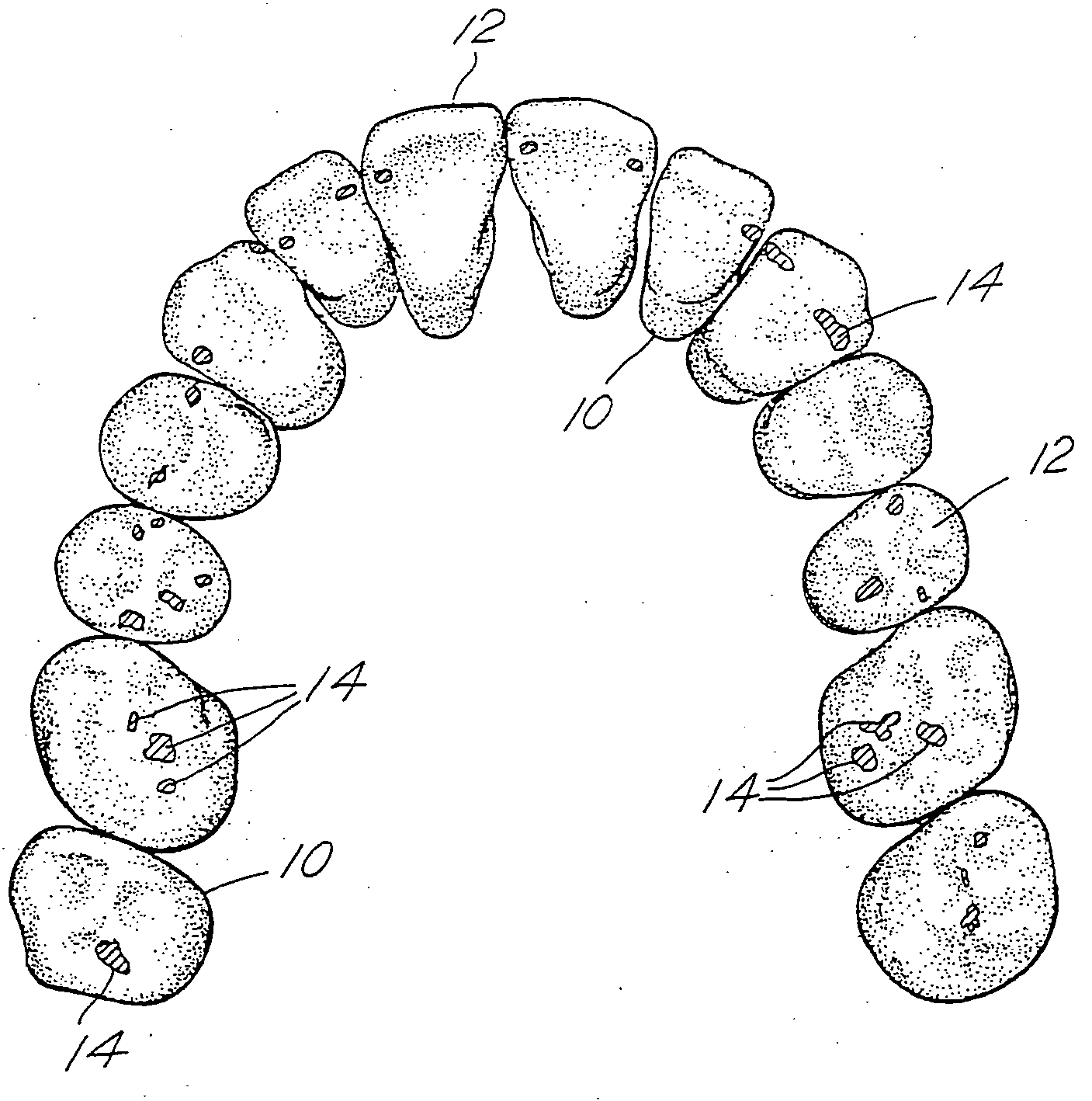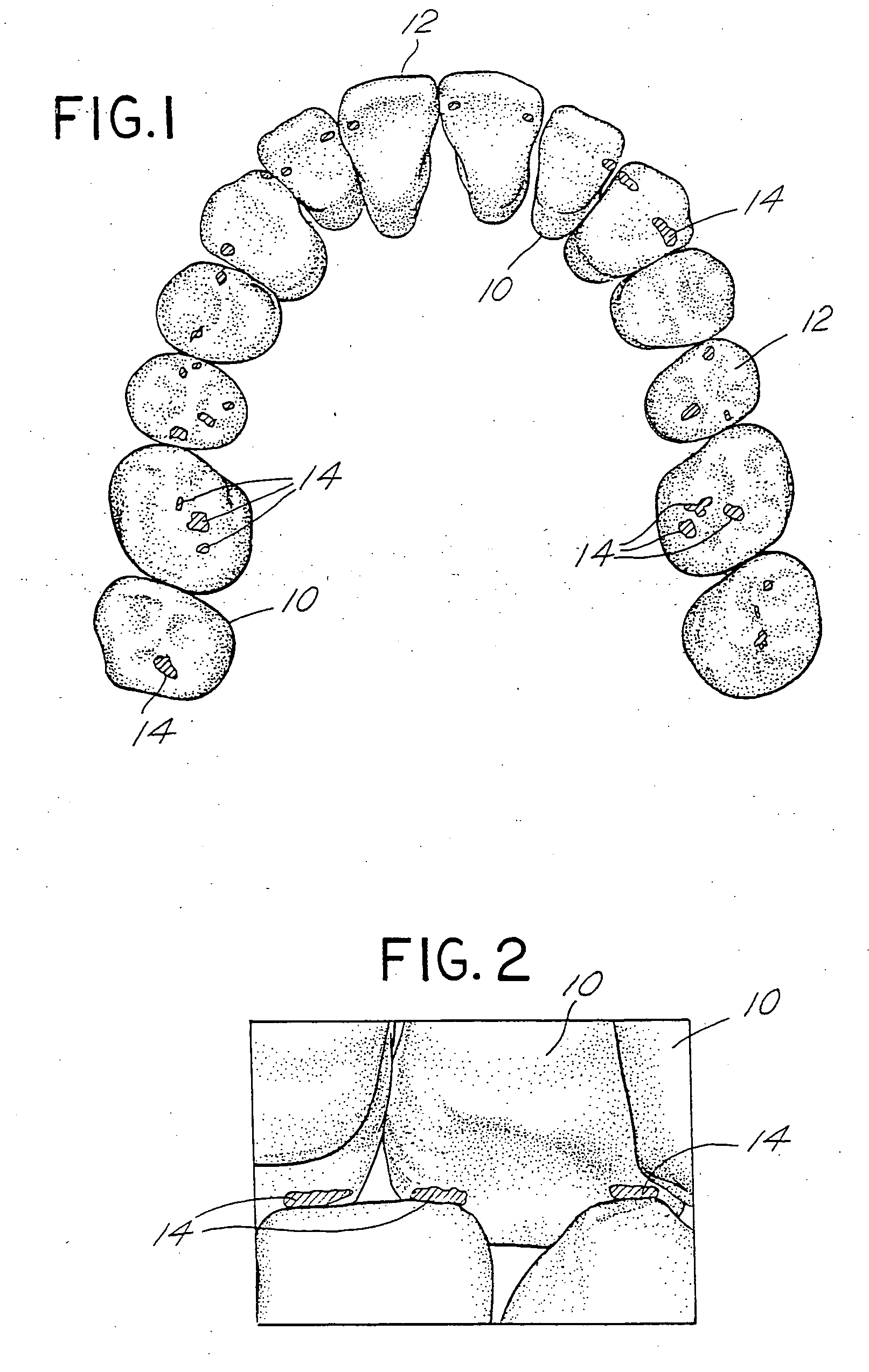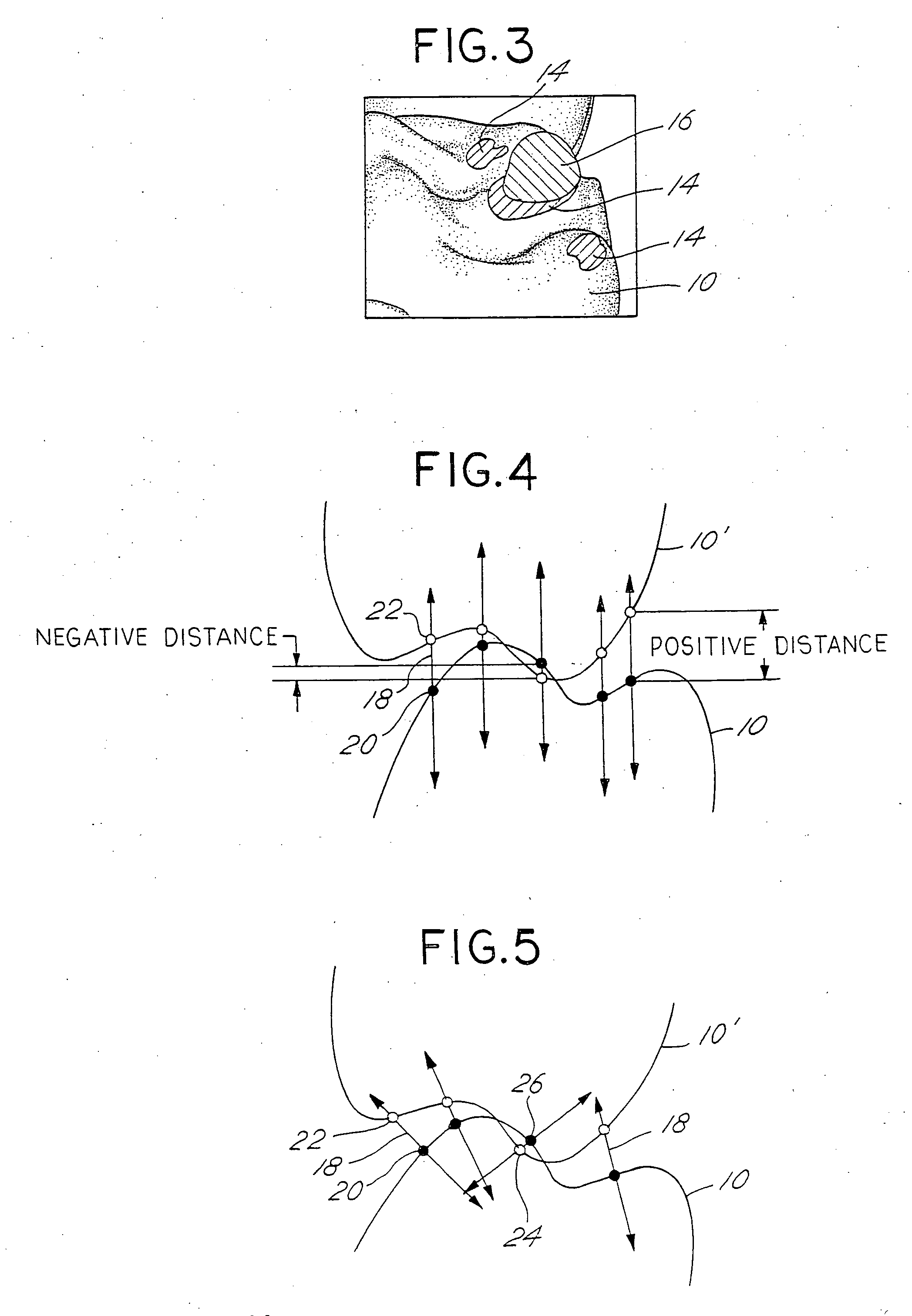Three-dimensional occlusal and interproximal contact detection and display using virtual tooth models
a virtual tooth and occlusal technology, applied in the field of dental and orthodontics, can solve the problems of inability to confirm, requires an extreme amount of time and labor, and is too expensive, and achieves the effect of optimizing the interproximal and occlusal relationship, positioning and/or orientation, and optimizing the shape and position
- Summary
- Abstract
- Description
- Claims
- Application Information
AI Technical Summary
Benefits of technology
Problems solved by technology
Method used
Image
Examples
Embodiment Construction
Overview
[0040] The determination and display of occlusal contacts between teeth in the upper and lower jaws in accordance with a preferred embodiment of the invention makes use of three-dimensional virtual models of teeth. The virtual models of teeth are stored in a memory and available to a general-purpose computer. As is known in the art, virtual models of teeth of a patient can be obtained by using a laser scanner to scan a physical model of the dentition. Alternatively, the teeth can be scanned in vivo, or a model of the dentition can be scanned, by a hand-held scanner such as the type described in published PCT application of OraMetrix, Inc., PCT / US01 / 11969, publication no. WO 01 / 80761, the entire contents of which is incorporated by reference herein.
[0041] Once the teeth have been scanned, the three-dimensional scan data can be represented in a a computer and displayed to the user as a three-dimensional model. There are a variety of techniques known in the CAD / CAM art for r...
PUM
 Login to View More
Login to View More Abstract
Description
Claims
Application Information
 Login to View More
Login to View More - R&D
- Intellectual Property
- Life Sciences
- Materials
- Tech Scout
- Unparalleled Data Quality
- Higher Quality Content
- 60% Fewer Hallucinations
Browse by: Latest US Patents, China's latest patents, Technical Efficacy Thesaurus, Application Domain, Technology Topic, Popular Technical Reports.
© 2025 PatSnap. All rights reserved.Legal|Privacy policy|Modern Slavery Act Transparency Statement|Sitemap|About US| Contact US: help@patsnap.com



